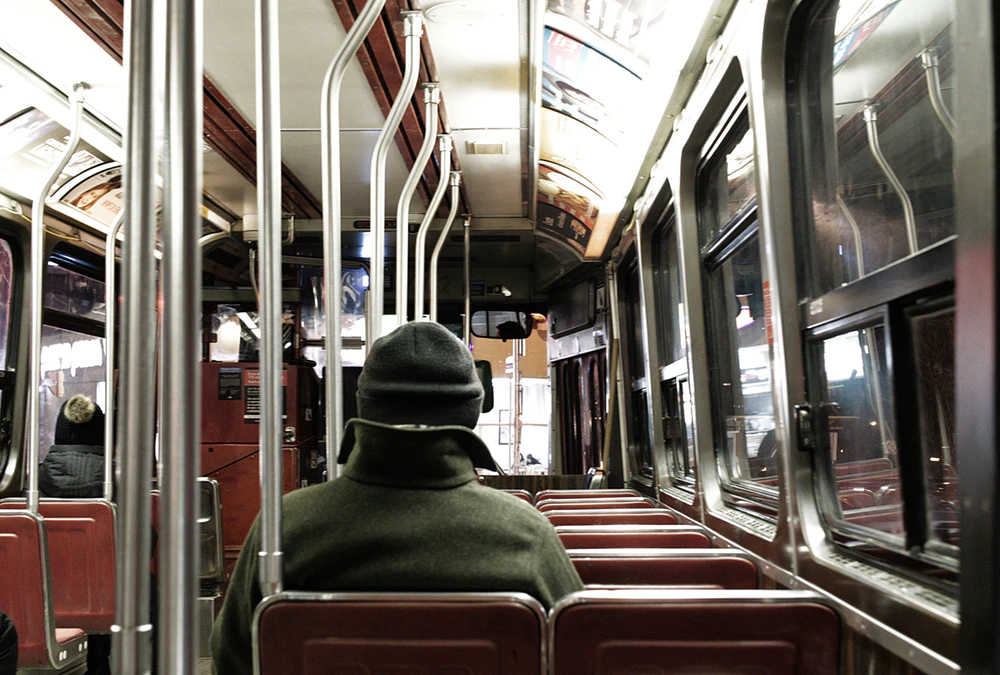Once a model for the rest of the world, public transit in the U.S. looks increasingly like a relic of a forgotten era. In many ways, the two pillars of public transit — buses and trains — have not changed significantly in several generations. A rider from the 1950s would likely be able to navigate a modern bus or train trip much more easily than an Uber or a shared scooter.
The issues with public transit are numerous. Access is a big one, in that nearly half (45%) of Americans have no access to public transit at all. The rest must contend with limited routes and aging equipment. In fact, the Federal Transit Administration recently found that 40% of buses and 25% of rail transit are in “marginal or poor” condition. In areas that do have public transit coverage, ridership has been declining for years, following a peak in 2014. While the latest statistics show a slight increase (2.2%) in 2019 ridership over 2018, the gains can be attributed to increases in just two regions (New York and Washington, D.C.).
Contrast these with continued drops in Los Angeles, Chicago, Boston, and Philadelphia. The vast majority of public transit rides are on buses, which have seen ridership fall 14.3% nationwide 3, typically due to quality issues such as how often the buses arrive on time and how frequently they are available. This is where the vicious cycle of public transit is thrown into sharp relief, because it is increased traffic congestion that most affects these issues.
Another reason for the decline is that cities and municipalities are attacking the problem of increased congestion directly, choosing to invest in expanding roadways. In fact, between 2010 and 2019, the U.S. constructed 28,500 miles of roads and only 1,200 miles of transit service. The discrepancy is stark. The American Public Transportation Association (APTA) recently reported that prolonged under-investment has created a backlog of public transit needs that totals $90 billion and is responsible for $340 billion in lost revenue over six years.
Rail ridership is more of a mixed bag. Many commuter rail systems have posted increases as recently as 2018, but ridership on subways and elevated trains (so-called heavy rail) as well as light rail dropped. Of course, many cities are seeing increases in rail usage, with some even achieving double-digit gains. But on the whole, the numbers are down. So where are all of these riders going? Into private, single-occupancy cars, for the most part.
Low gas prices and affordable car loans are two major contributing factors. A recent survey of riders in major metro areas revealed that people in all regions were riding less and driving more. As you can imagine, the result is unprecedented congestion. In the three most congested cities, drivers lose 164 hours (Boston), 155 hours (Washington, D.C.), and 138 hours (Chicago) sitting in traffic every year. Even in the slightly less congested New York City, congestion levels are so bad that average traffic speeds dropped 30% between 2010 and 2016. These hours sap billions from the economy in the form of lost productivity, while also making transportation the number one polluter by sector, accounting for 29% of all U.S. greenhouse gas emissions.
Again, increased congestion has a doubly negative effect because it makes buses more unreliable while simultaneously encouraging cities to spend money on roads instead of public transit infrastructure. So how do cities reverse these trends and get public transit ridership back on track? Most solutions — from light rail to high-speed rail to bike lanes to walkable urban areas to dedicated routes — are attractive in theory but may require large investments and an equal amount of political will.
At the moment, it is unclear whether public demand will force the hand of municipalities currently unwilling or unable to make the huge capital investments required. It is far more likely that cities will use an “all of the above” mix of solutions rather than pinning their hopes on a single big-ticket investment. For example, cities can continue to invest in revitalizing bus infrastructure, commuter rail lines, and light rail, then combine all of these with microtransit (which combines dynamic routing with a fleet of passenger vans) to cover the first/last mile gap, reducing congestion, emissions, and over-reliance on Uber and Lyft.




